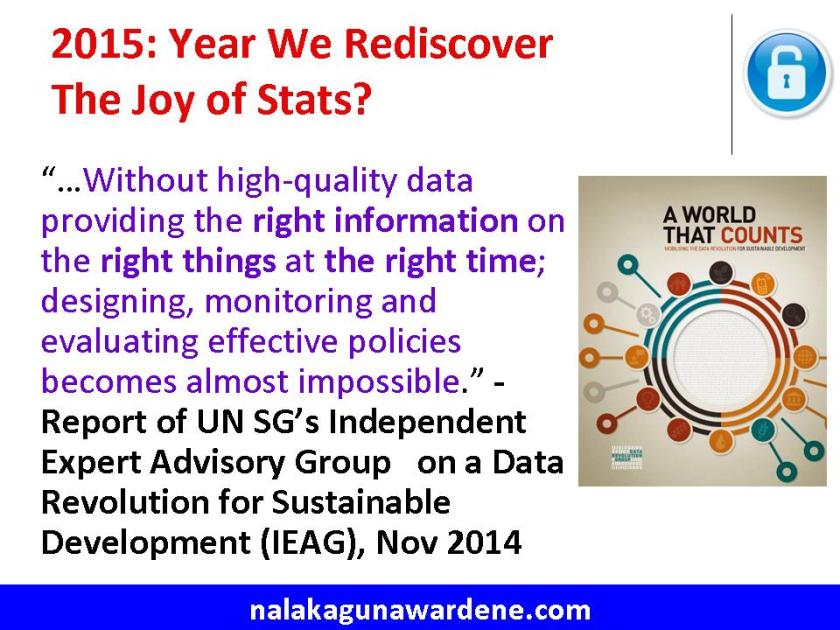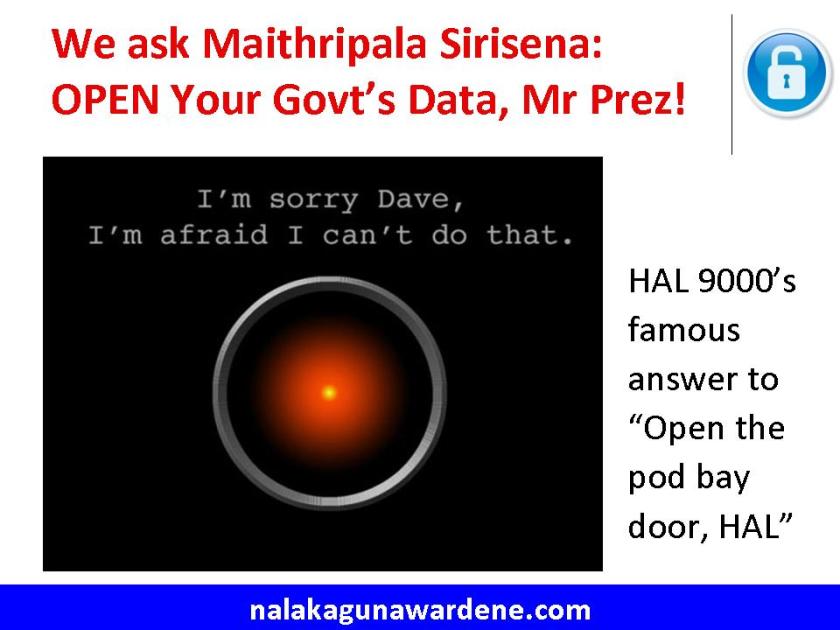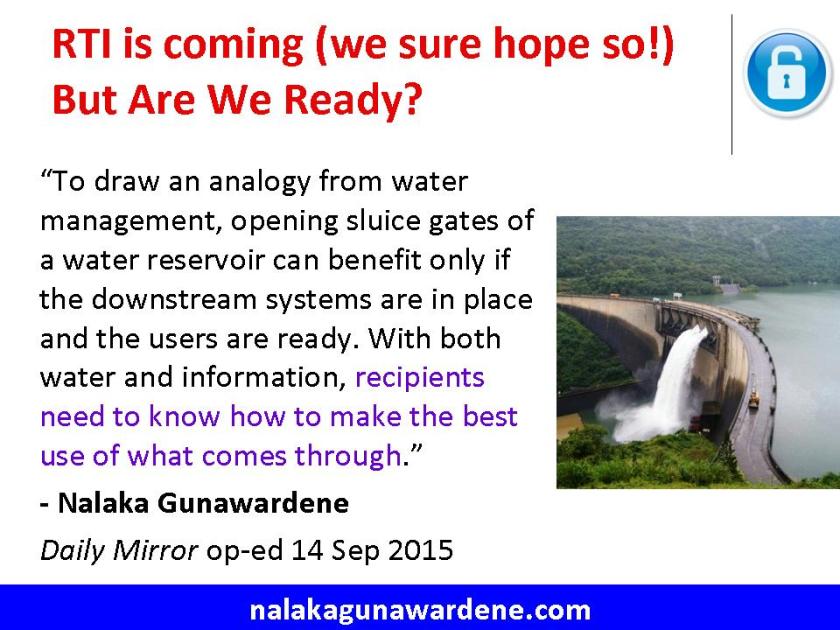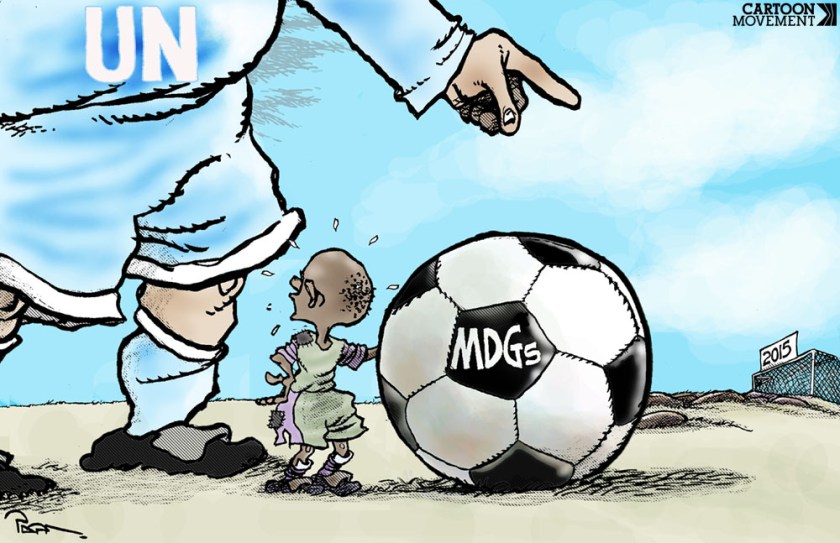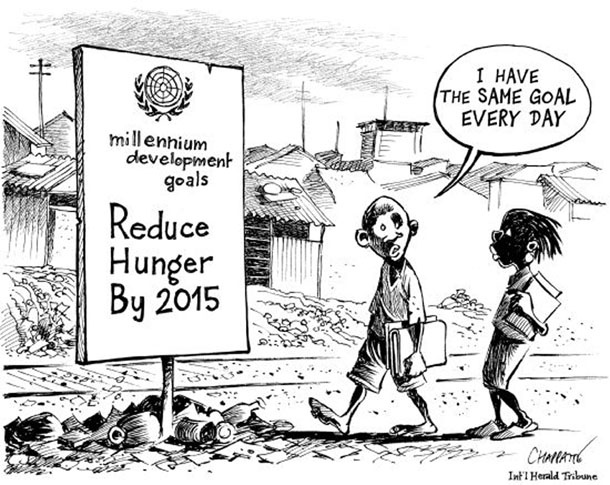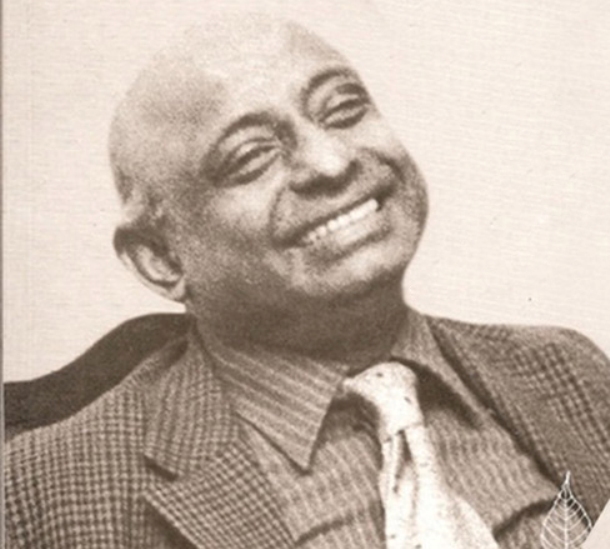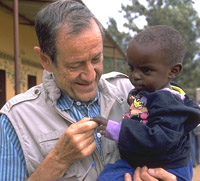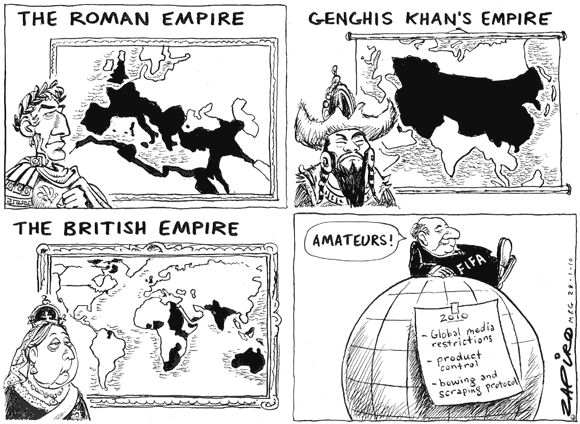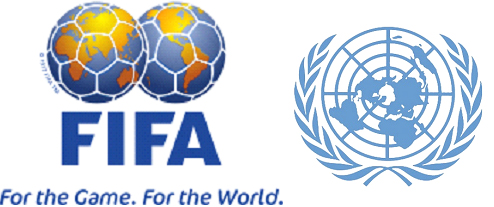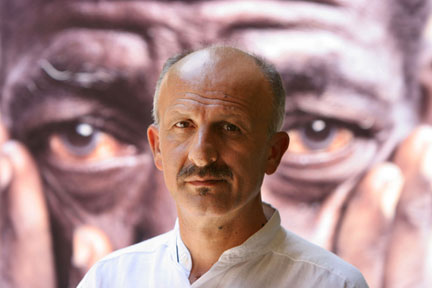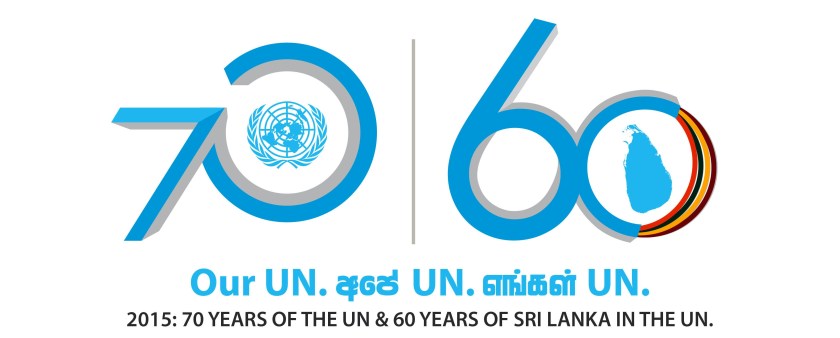
On 24 October 2015, United Nations marks its 70th birthday. A few weeks later, on 15 December 2015, is the 60th anniversary of Sri Lanka (then Ceylon) becoming a member state of this inter-governmental organisation.
In this week’s Ravaya column, (appearing in issue of 25 Oct 2015), I continue my focus on Sri Lanka’s engagement with the UN system. In last week’s column, we recalled how Sri Lanka’s heads of state/government and diplomats engaged with the General Assembly and Security Council.
සිවුමංසල කොලූගැටයා #241: හැට වසරක් පුරා එක්සත් ජාතීන්ගේ ලාංකික ලකුණ
Today, we look at some eminent Lankan professionals who joined the UN system in expert or management positions and contributed to its intellectual and institutional development over the decades.
As Thalif Deen, a journalist of Lankan origin who has been reporting from the UN headquarters since the mid 1970s, once wrote: “When future historians take stock of Sri Lanka’s enduring contributions during its first 50 years at the United Nations, they may realise that our political legacy spanned both the upper and lower limits of the universe: the sky above and the oceans below.”
The list of Lankans who have excelled within the UN system is long, and I have had to be selective here. The ones mentioned in this column are:
- Dhanapala Samarasekera (one of the earliest Lankans to join the UN system, as an expert with ECOSOC);
- Neville Kanakaratne (legal advisor to the second Secretary General Dag Hammarskjold);
- Nandasiri Jasentuliyana (Director of UN Office for Outer Space Affairs among other positions);
- Hamilton Shirley Amerasinghe (President of the UN General Assembly in 1976, and later president of the UN Law of the Sea Conference);
- Gritakumar E Chitty (a former Registrar of the International Tribunal for the Law of the Sea);
- Gamani Corea (a former Secretary General of UNCTAD);
- Christopher G Weeramantry (Justice of the International Court of Justice and later its Vice President);
- Rajendra Coomaraswamy (Assistant Administrator of UNDP and Director of UNDP’s Regional Bureau for Asia and the Pacific);
- Radhika Coomaraswamy (UN Special Representative for Children and Armed Conflict 2006-2012);
- Andrew J Joseph (Associate Administrator of UNDP);
- Jayantha Dhanapala, President of the Nuclear Non-Proliferation Treaty Conference 1995 and Under Secretary General heading the UN Department of Disarmament (1998–2003)
I end with a reference to Lakshman Kadirgamar, who served the ILO and later WIPO in senior positions in Geneva before becoming Sri Lanka’s finest Minister of Foreign Affairs in 1994. I quote from the Foreword that Kadirgamar wrote to a book on the United Nations in Sri Lanka that I wrote for the UN Information Centre (UNIC) in Colombo in 1995 to mark the UN’s 50th anniversary.
See also:
7 April 2013: සිවුමංසල කොලූගැටයා #112: අදීන හා අභීත පුවත්පත් කතුවරයා – ටාසි විට්ටච්චි
21 April 2013: සිවුමංසල කොලූගැටයා #114: ටාසිගේ ලෝකය හා මගේ ලෝකය
1 Dec 2013: සිවුමංසල කොලූගැටයා #145: තුන්වන ලෝකයට බුද්ධිමය පහන්ටැඹක් වූ ආචාර්ය ගාමිනී කොරෙයා
22 Dec 2013: සිවුමංසල කොලූගැටයා #148: වර්ණභේදවාදය පිටු දැකීමට ලැබුණු ලාංකික දායකත්වය
18 Oct 2015: සිවුමංසල කොලූගැටයා #241: හැට වසරක් පුරා එක්සත් ජාතීන්ගේ ලාංකික ලකුණ
එක්සත් ජාතීන්ගේ 70 වන උපන් දිනය ඔක්තෝබර් 24 වැනිදාට යෙදෙනවා. ශ්රී ලංකාව මේ අන්තර් රාජ්ය සංවිධානයේ සාමාජිකත්වය ලබා මේ වසරට දශක හයක් සම්පූර්ණ වෙනවා.
මේ දශක හයේදී මෙරට නියෝජනය කරමින් එජා සමුළු හා වෙනත් ක්රියාකාරකම්වලට සම්බන්ධ වූ කීර්තිමත් රාජ්ය තාන්ත්රිකයන් කිහිප දෙනකු ගැන ගිය සතියේ අප කතා කළා. අද අප විමසන්නේ එජා කාර්ය මණ්ඩලයට බැඳී බුද්ධිමය දායකත්වය හරහා එය පෝෂණය කළ ලාංකික විද්වතුන් ගැනයි.
එක්සත් ජාතීන් ලෙස පොදුවේ හැඳින් වෙන ආයතන හා සංවිධාන ජාලයක් හෙවත් පවුලක් තිබෙනවා. එයින් සමහරක් තමන්ගේම පාලක සභාවක් සහිත විශේෂ සංවිධානයි. එජා සංවර්ධන වැඩසටහන (UNDP) එජා ළමා අරමුදල (UNICEF) හා ආහාර හා කෘෂිකර්ම සංවිධානය (UN-FAO) මීට නිදසුන්. එවැනි ආයතනවලට තමන්ගේම විධායක අධ්යක්ෂවරයකු හා පරිපාලන තන්ත්රයක් සතුයි.
එදා මෙන්ම අදත් බලගතු රාජ්යයන්ට එක්සත් ජාතීන්ගේ ව්යුහය තුළ වැඩි බලපෑමක් කළ හැකියි. එය 1945දී පැවති බලතුලනය මත තීරණය වූ හා අද ලෝකයට නොගැළපෙන විසමතාවක්. එහෙත් එය එසේ වූ පමණට මධ්යම හා කුඩා ප්රමාණයේ රටවල් කොන්වීමක් සිදු වන්නේ ද නැහැ.
ආරක්ෂක මණ්ඩලය තුළ චීනය, රුසියාව, බි්රතාන්යය, අමෙරිකා එක්සත් ජනපදය හා ප්රංශය යන රටවල් පහට නිෂේධ බලය ඇතත් අන් සියලූ ආයතන ව්යුහයන්ගේ තීරණ සඳහා ලොකු කුඩා හැම සාමාජික රාජ්යයටම ඇත්තේ එක් ඡන්දය බැගින්. තීරණ ගන්නේ බහුතර ඡන්දය මත පදනම් වීයි.
දේශපාලනිකව තීරණාත්මක මහා මණ්ඩලය, ආරක්ෂක මණ්ඩලය වැනි ආයතනික ව්යුහයන් ඍජුවම එජා මහ ලේකම් කාර්යාලය විසින් පරිපාලනය කැරෙනවා. එය කරන්නේ ජාත්යන්තර සිවිල් සේවකයන් ලෙෂ හැඳින්විය හැකි කාර්ය මණ්ඩලයක් විසින්.
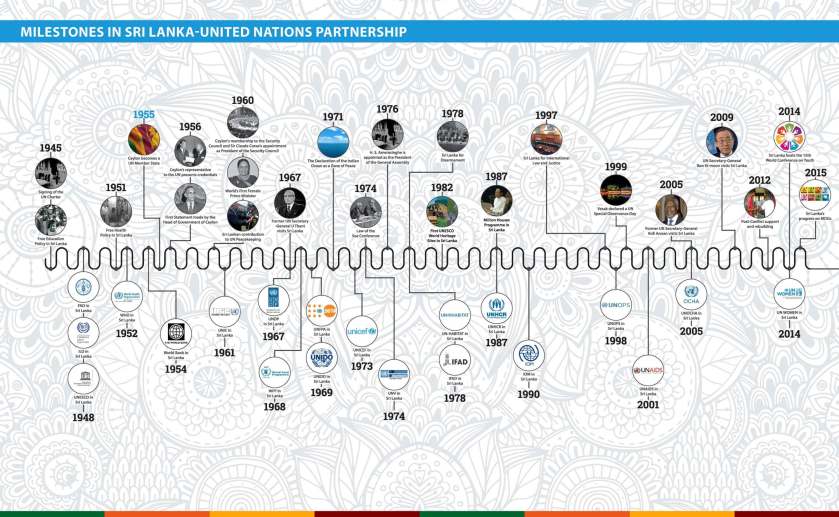
මහ ලේකම්වරයා යටතේ ක්රියාත්මක වන මේ පිරිස ඔහු හරහා සාමාජික රාජ්ය 193ටම වගකීමට බැඳී සිටිනවා. වාර්ෂිකව එජා නඩත්තුවට සාමාජික මුදල් ගෙවන ශ්රී ලංකාව ඇතුළු සාමාජික රටවලට මේ නිලධාරීන් නිශ්චිත උපදේශන හා සම්බන්ධීකරණ සේවා සපයනවා.
ජාත්යන්තර සිවිල් සේවයට බඳවා ගන්නේ එජා සංවිධානයේ නිල භාෂා 6න් (ඉංග්රීසි, ප්රංශ, අරාබි, රුසියානු, චීන හා ස්පාඤ්ඤ) අඩු තරමින් එකක් හරිහැටි ප්රගුණ කළ, නිසි සුදුසුකම් සපුරා ගත් අයයි. ලෝකයේ ඕනෑම සාමාජක රටක පුරවැසියන්ට මේ තනතුරුවලට ඉල්ලූම් කළ හැකියි.
මේ කාර්ය මණ්ඩලය, එජා සමුළුවට සහභාගිවීමට යන තානාපති හා රාජ්ය නිලධාරීන්ට වඩා වෙනස්. ඔවුන් තනි රටකට නොව සියලූ සාමාජික රටවලට සේවය කිරීමටත්, එජා ප්රඥප්තිය හා මූලධර්ම සුරැකීමටත් බැඳී සිටිනවා.
1955දී ශ්රී ලංකාව එජා සාමාජිකත්වය ලබන්නටත් පෙර පටන් කෘතහස්ත ලාංකිකයෝ එජා කාර්ය මණ්ඩලයට බැඳී සේවය කරමින් සිටියා. 1952-59 වකවානුවේ එජා ආර්ථික හා සමාජයීය කොමිසමේ (ECOSOC) උසස් නිලධාරියකු වූ ධනපාල සමරසේකර එක් උදාහරණයක්. ආසියානු හා අප්රිකානු රාජ්ය නායකයන්ගේ මුල්ම සමුළුව 1955 අපේ්රල් මස ඉන්දුනීසියාවේ බන්දුන් නුවර පැවති විට එජා සංවිධානය නියෝජනය කරමින් සහභාගි වූයේ ඔහුයි.

කේම්බි්රජ් සරසවියෙන් නීති උපාධි ලැබූ නීතිඥ නෙවිල් කනකරත්න මුල් යුගයේ එජා කාර්ය මණ්ඩලයට බැඳුණු දක්ෂයෙක්. 1957-60 වකවානුවේ එජා මූලස්ථානයේ ලංකා දූත කාර්යාලයේ නීති උපදේශක වූ ඔහු 1960දී නීති හා දේශපාලන උපදේශකයකු ලෙස එජා කාර්ය මණ්ඩලයට එක් වුණා. 1960-64 කාලයේ එජා සාම සාධක හමුදාවලට නීති උපදෙස් ලබා දුන් ඔහු දෙවන මහ ලේකම් වූ ඩැග් හැමර්ෂල්ඞ්ගේ නීති උපදේශකවරයා ද වූවා.
1961 සැප්තැම්බරයේ කොංගෝවේ ගැටුම් ඇවිලී ගොස් සටන් විරාමයක් සඳහා සාකච්ඡා කරන්නට මහ ලේකම් අප්රිකාවට ගියා. ඔහු සමග කනකරත්න ද යාමට නියමිතව සිටියත් අවසන් මොහොතේ තමාට වඩා හොඳින් ප්රංශ බස කතා කරන නීති විශාරදයකුට තැන දී කනකරත්න නතර වුණා. (අප්රිකාවේ සමහර රටවල දෙවන බස ප්රංශ බසයි.)
1961 සැප් 18 වැනිදා මහලේකම්වරයා සහ තවත් 15 දෙනකු රැගත් එජා ගුවන් යානය දැන් සැම්බියාවට අයත් න්දෝලා නම් ස්ථානයේදී කඩා වැටුණා. ඔවුන් සියලූ දෙනා මිය ගියා. මේ අනතුර අහම්බයක් ද හිතාමතා කළ දෙයක් ද යන්න ගැන අද දක්වා විවාද කැරෙනවා.
කෙසේ වෙත්ත යාන්තමින් බේරුණු කනකරත්න පසු කලෙක අමෙරිකා එක්සත් ජනපදයේ, රුසියාවේ හා ඉන්දියාවේ ශ්රී ලංකා තානාපතිවරයා ලෙස අතිශය වගකීම් සහගත තනතුරු දැරුවා.
1978දී අමෙරිකාවේ ජෝර්ජ් වොෂිංටන් සරසවිය විසින් ඔහුට ගෞරව ආචාර්ය උපාධියක් පිරිනමනු ලැබුවා. ඉතා චතුර හා සිත් ගන්නා සුලූ කථිකයකු වූ ඔහු යම් දිනෙක ලෝක පාර්ලිමේන්තුවක් බිහි වූවොත් එහි කතානායක වීමට සුදුසු යැයි සරසවියේ අධිපතිවරයා එදා ප්රකාශ කළා.
එක්සත් ජාතීන්ගේ ඉහළ තනතුරු හොබවමින් බුද්ධිමය නායකත්වයක් ලබා දුන් තවත් කීර්තිමත් ලාංකික නීතිඥයකු නම් නන්දසිරි ජසෙන්තුලියන. 1965 සිට 1999 දක්වා එජා කාර්ය මණ්ඩලයේ සිටි ඔහු 1988-99 වකවානුවේ ඔස්ටි්රයාවේ වියානා නුවර පිහිටි අභ්යවකාශය පිළිබඳ එජා කාර්යාලයේ (UN Office for Outer Space Affairs) අධ්යක්ෂවරයා වූවා.
අභ්යවකාශ නීතිය ගැන ලොව ප්රමුඛ පෙළේ විද්වතකු වන ඔහු ජාත්යන්තර මට්ටමේ අභ්යවකාශ සහයෝගිතා සමුළු ගණනාවක් මෙහෙය වූ අතර ඒ ගැන පොත්පත් හා නිබන්ධන රැසක් ලියා තිබෙනවා.
අමෙරිකාවේ ජාතික අභ්යවකාශ සංගමය (National Space Society) මීට වසර කිහිපයකට පෙර අභ්යවකාශ ගවේෂණයට සම්බන්ධ ලෝකයේ ප්රමුඛතම චරිත 100ක් නම් කළා. යූරි ගගාරීන්, නීල් ආම්ස්ට්රෝං වැනි පුරෝගාමීන් මෙන්ම තාක්ෂණවේදීන් හා අනාගතවේදීන් අයත් වූ මේ ලැයිස්තුවේ සිටි එකම ලාංකිකයා වූයේ නන්දසිරි ජසෙන්තුලියනයි.
ඔහු අභ්යවකාශය පොදු මානව උරුමයක් ලෙස තහවුරු කරන්නට නීතිමය රාමුව සකසන විට තවත් ලාංකිකයන් දෙදෙනෙක් සාගරය ලෝක දායාදයක් ලෙස පිළිගැනීම සඳහා ලෝක සාගර නීතිය (Law of the Sea) බිහි කිරීමට මුල් තැන ගත්තා.
එයින් පළමුවැන්නා 1973-80 වකවානුවේ ලෝක සාගර නීති සමුළුවේ සභාපති ලෙස ක්රියා කළ හැමිල්ටන් ෂර්ලි අමරසිංහයි. 1967-78 කාලයේ ශ්රී ලංකාවේ නිත්ය නියෝජිතයා ලෙස එජා මූලස්ථානයේ ඔහු කටයුතු කළ සැටි ගිය සතියේ අප සඳහන් කළා.
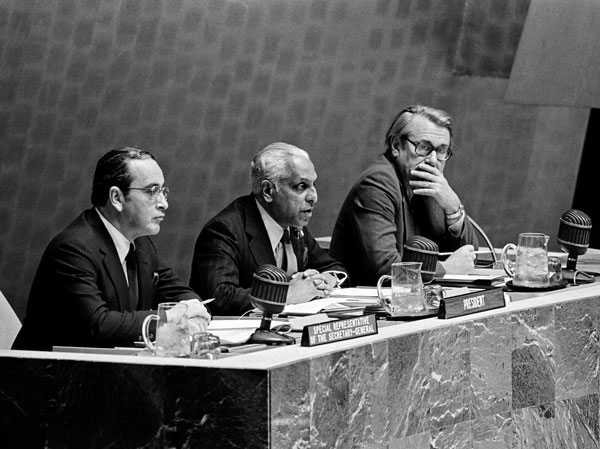
1975-80 කාලයේ අමරසිංහ සමග එකට වැඩ කළ ලාංකික නීතිඥ ග්රීතකුමාර් චිටි (Gritakumar Chitty) වසර 36ක් පුරා එජා සාගර නීති ක්රියාත්මක කිරීමට නායකත්වය සැපයුවා. එයින් අන්තිම වසර කිහිපය ඔහු ජර්මනියේ හැම්බර්ග් නුවර ජාත්යන්තර සාගර නීති අධිකරණයේ (International Tribunal for the Law of the Sea) රෙජිස්ට්රාර්වරයා ලෙස ක්රියා කළා.
මේ අනුව බලන විට අභ්යවකාශයේත්, සාගරයේත් ජාත්යන්තර සහයෝගිතාව ප්රවර්ධනය කිරීමට එක්සත් ජාතීන්ගේ කාර්ය මණ්ඩලයේ ලාංකිකයන් වැදගත් බුද්ධිමය දායකත්වයක් සපයා ඇති බව ලාංකික මාධ්යවේදී තලිෆ් ඞීන් (Thalif Deen) කියනවා. 1973 සිට නිව්යෝක් නුවර වෙසෙන ඔහු දශක හතරකට වැඩි කාලයක් එජා මූලස්ථානයේ සිදුවීම් මෙරට හා ලෝක මාධ්යවලට වාර්තා කරන්නෙක්.
මානව සංවර්ධනය හා ලෝක සාමය සඳහාද එක්සත් ජාතීන්ගේ විවිධ කටයුතුවලට ලාංකික විද්වත් දායකත්වය ලැබී ඇත්තේ රටේ ජනගහනයේ ප්රමාණයට සමානුපාතිකව ඉහළ මට්ටමකින්.
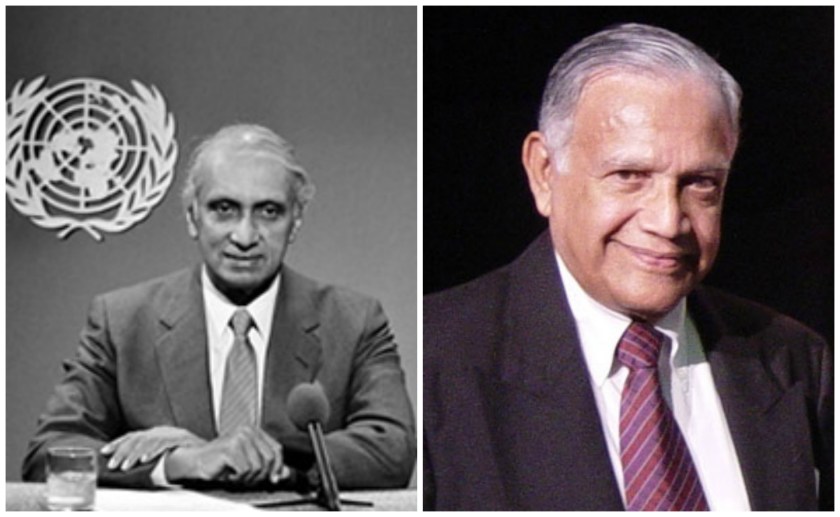
1974-84 වකවානුවේ වෙළෙඳාම හා සංවර්ධනය පිළිබඳ එජා සමුළුව (UNCTAD) මහ ලේකම්වරයා ලෙස ආර්ථික විශේෂඥ ආචාර්ය ගාමණී කොරයා කළ සුවිශේෂී කාර්යභාරය ගැන 2013 නොවැම්බරයේ සම්පූර්ණ කොලමක් හරහා මා සිහිපත් කළා.
එජා පවුලටම අයත්, හේග් නුවර පිහිටි ජාත්යන්තර අධිකරණයේ විනිසුරුකරුවකු ලෙස 1991-2000 වකවානුවේ ආචාර්ය ක්රිස්ටෝෆර් වීරමන්ත්රී ක්රියා කළා. එයින් 1997-2000 අතර කාලයේ ඔහු එහි උප සභාපතිවරයා වූවා. සංකීර්ණ ලෝක ප්රශ්න ගැන විද්වත් හා තුලනාත්මක නඩු තීන්දු ලබා දීම ගැන ඔහු මහත් ගෞරවයට පාත්ර වූ කෙනෙක්.
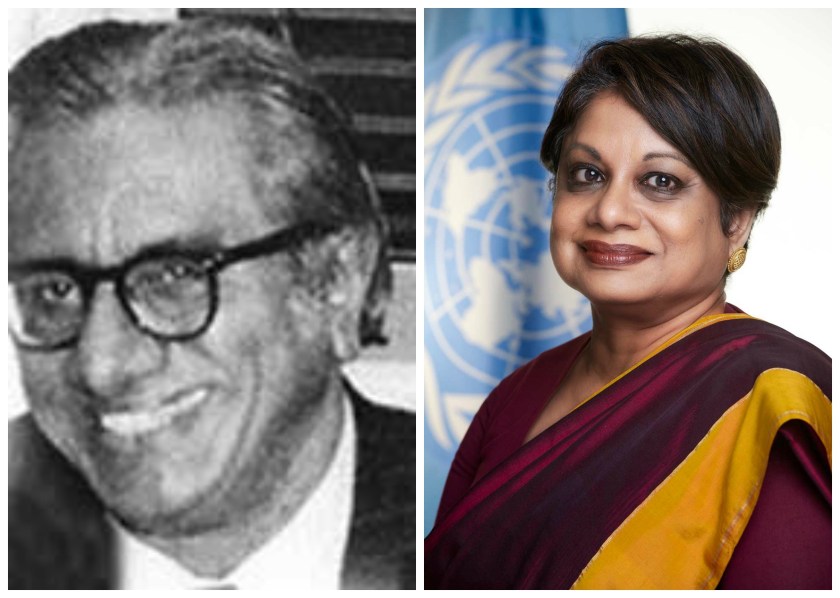
UNDP ආයතනයේ ආසියානු ප්රධානියා බවට මුලින්ම පත් වූ ලාංකිකයා රාජේන්ද්ර (රාජු) කුමාරස්වාමි (1915-1981). ඔහුත් මෙරට සිවිල් සේවයේ සිට පසුව ජාත්යන්තර සිවිල් සේවයට ගිය දක්ෂයෙක්.
ඔහුගේ දියණිය නීති විශාරද ආචාර්ය රාධිකා කුමාරස්වාමි. ඇයද පසු කලෙක එජා මූලස්ථානයේ ඉහළ තනතුරකට පත් වුණා. ඒ යුද්ධ හා ළමයින් පිළිබඳ විශේෂ නියෝජියා ලෙසින්. 2006-2012 එම තනතුරේ ක්රියා කරද්දී ගැටුම් හා ප්රචණ්ඩත්වය ළමයින්ට බලපාන ඍජු හා වක්ර ආකාරයක් ගැන අය ලෝක අවධානයට යොමු කළා.
ඇන්ඩෲ ජෝසෆ් (Andrew J. Joseph) මුල් යුගයේ එජා සේවයට ගිය තවත් ලාංකික සිවිල් සේවකයෙක්. 1959දී මුලින් ලෝක සෞඛ්ය සංවිධානයට බැඳුණු ඔහු පසුව UNDP ආයතනයට මාරු වුණා. සමස්ත ආසියාවේම ඹභෘඡු ප්රධානියා ලෙස වසර ගණනක් කටයුතු කළ ඔහු පසුව ලෝක ව්යාප්ත මට්ටමින් UNDP දෙවැනි ප්රධානියා ලෙස සේවය කොට විශ්රාම ගියා.
එජා තනතුරු බැබල වූ තරු අතරට ජයන්ත ධනපාලගේ නමත් එකතු වනවා. ඔහු ලංකා විදේශ සේවයේ වෘත්තීය තානාපති නිලධාරියෙක්. ලන්ඩන්, බේජිං, නවදිල්ලිය, ජිනීවා හා වොෂින්ටන් නුවර යන ස්ථානවල ලංකා තානාපති කාර්යාලවල සේවය කළා. ඔහු ලෝක කීර්තියට පත්වූයේ 1995දී න්යෂ්ටික අවි ප්රචලිතවීම වැළැක්වීම පිළිබඳ එක්සත් ජාතීන්ගේ සමුළුව මෙහෙයවූ එහි සභාපතිවරයා ලෙසයි.
යුද අවිහරණය ගැන විශේෂඥයකු වන ඔහු 1998-2003 කාලයේ එක්සත් ජාතීන්ගේ නිරායුධකරණ කාර්යාලයේ (UN Department of Disarmament) අධිපතිවරයා වූවා.
එක්සත් ජාතීන්ගේ ධුරාවලියෙහි යාමට හැකි ඉහළම තුන්වන මට්ටමට (Under-Secretary-General) ළඟා වූ ලාංකිකයන් සිවු දෙනකු සිටිනවා. එනම් ගාමනී කොරයා, ඇන්ඩෘ ජෝසෆ්, රාධිකා කුමාරස්වාමි සහ ජයන්ත ධනපාලයි.
ධනපාල 2006දී මහ ලේකම් තනතුර සඳහා ඉදිරිපත් වූවත් අවශ්ය තරම් සහයෝගය නොලැබීම නිසා පසුව තරගයෙන් ඉවත් වුණා.
එක්සත් ජාතීන්ගේ ආයතනික ව්යුහය තුළ විද්වත් මට්ටමින් හා පරිපාලන මට්ටමින් සේවය කළ තවත් ලාංකිකයන් සිය ගණනක් සිටිනවා. තමා උපන් රට නියෝජනය කරවා වෙනුවට තම හැකි පමණින් ලෝක සාමය, සංවර්ධනය හා සහයෝගිතාව සඳහා දායක වූ ඔවුන් සැම මේ මොහොතේ සිහිපත් කිරීම වටිනවා.
1974-1988 කාලයේ ජිනීවා නුවර එජා සංවිධාන සමග වැඩ කළ ලාංකික නීතිඥ ලක්ෂ්මන් කදිරගාමර් එම ආයතන ව්යුහය ගැන මනාව දැන සිටියා. ඔහු මුලින් ලෝක කම්කරු සංවිධානයේ (ILO) උපදේශකයකු වුණා. පසුව ලෝක බුද්ධිමය දේපළ සංවිධානයේ (WIPO) ආසියා කලාපීය අධ්යක්ෂවරයා වුණා.
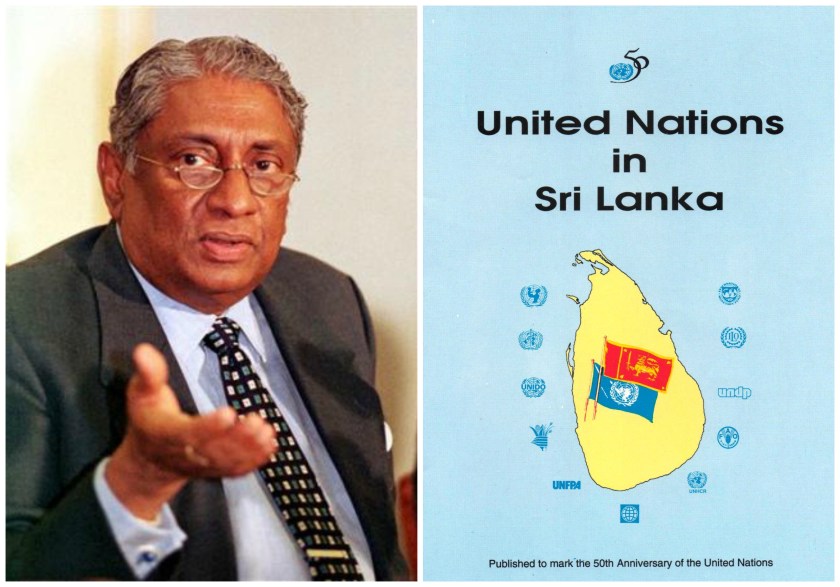
එක්සත් ජාතීන් හා ශ්රී ලංකාව ගැන 1995දී මා ලියූ ඉංග්රීසි පොතකට පෙරවදන සැපයුවේ ඒ වන විට ශී්ර ලංකා විදේශ අමාත්යවරයා බවට පත්ව සිටි කදිරගාමර් මහතායි. එහි ඔහු මෙසේ ප්රකාශ කළා.
‘මුල් යුගයේ පටන්ම මනා ජාත්යන්තර දැක්මක් සහිතව ලෝක ප්රජාව සමග ගනුදෙනු කරන්නට ලංකාවේ රජයන් ක්රියා කොට තිබෙනවා. එක්සත් ජාතීන්ගේ ප්රඥප්තිය හා සෙසු මූලධර්ම ගැන අවබෝධයකින් යුතුව කටයුතු කිරීම නිසා ශ්රී ලංකාව හා එක්සත් ජාතීන්ගේ ආයතන සමුදාය අතර කවදත් සමීප බැඳීමක් පැවතුණා. මෙරට රජයන් වෙනස් වූවද බැඳීම දිගටම පැවතීම විශේෂයි. එක්සත් ජාතීන්ගේ දායකත්වය අපට උපකාර වනවා මෙන්ම අපේ දක්ෂයන්ගේ දායකත්වය එක්සත් ජාතීන්ට මහත් සවියක් වනවා. මෙය අන්යොන්ය සහයෝගිතාවේ ප්රතිපූර්තියක් බඳුයි.’
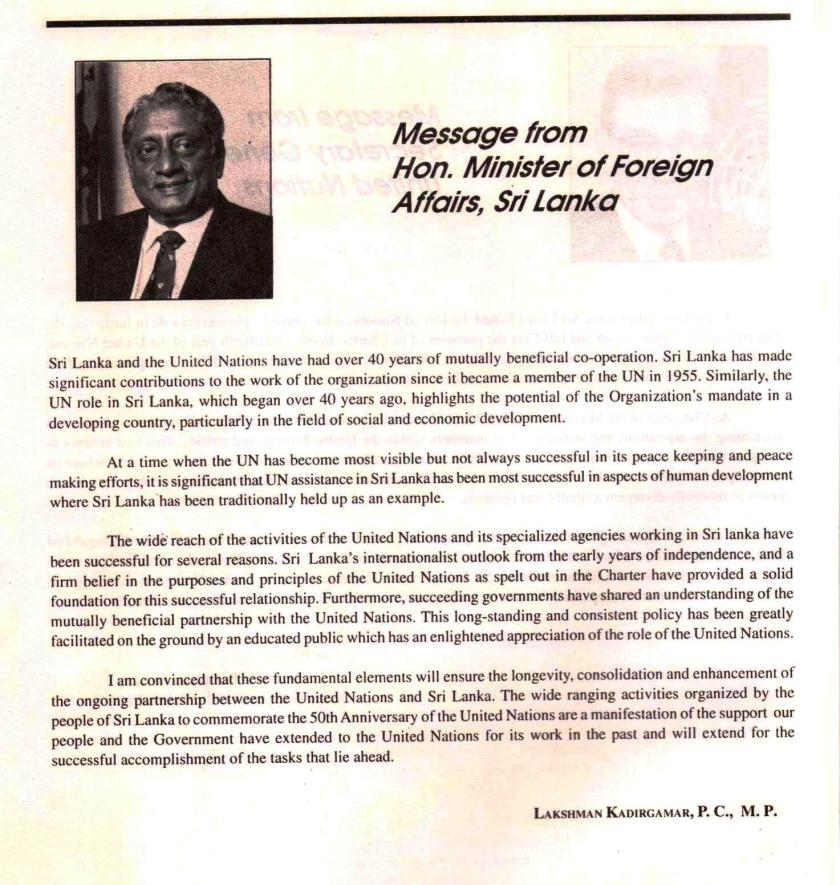
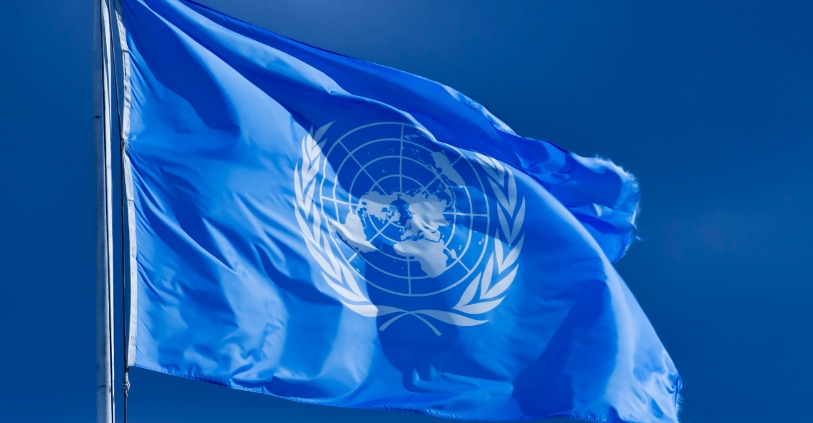

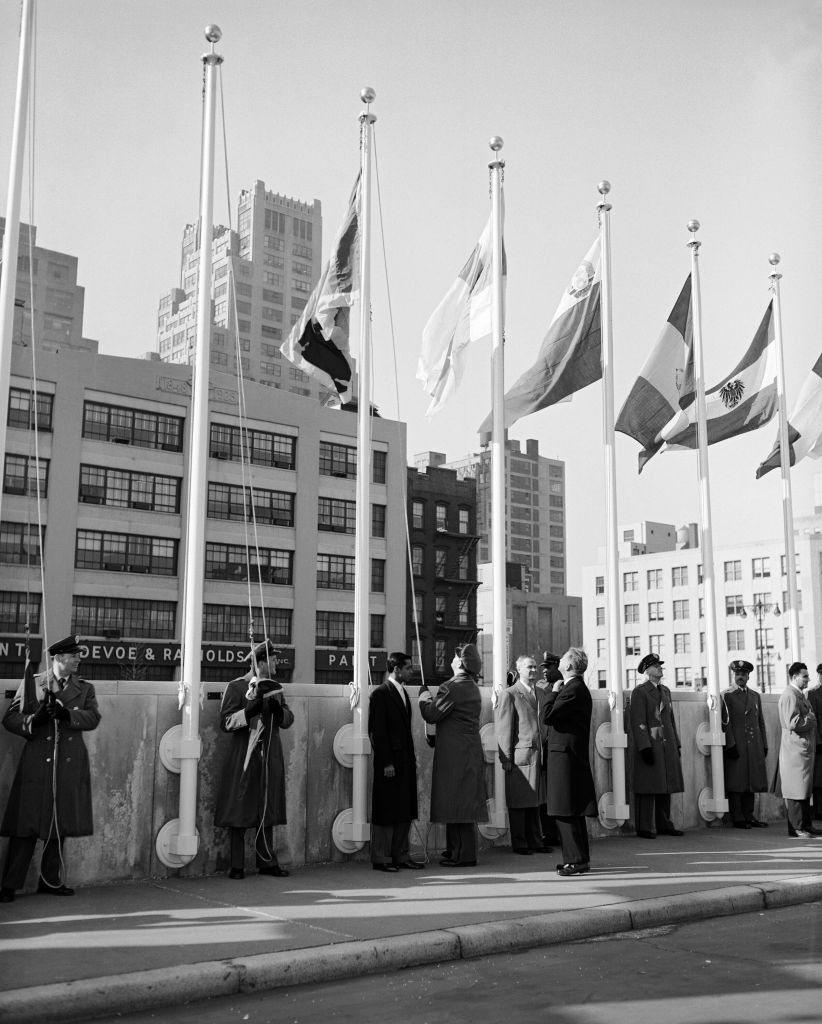
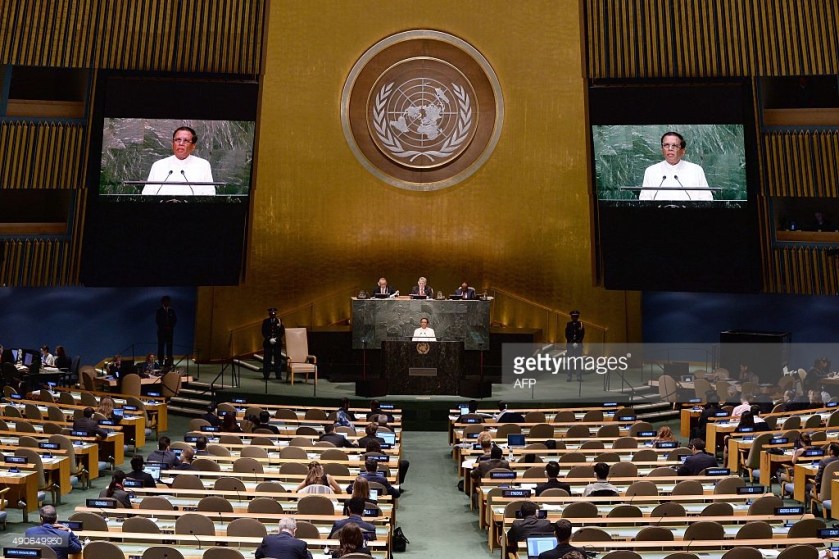
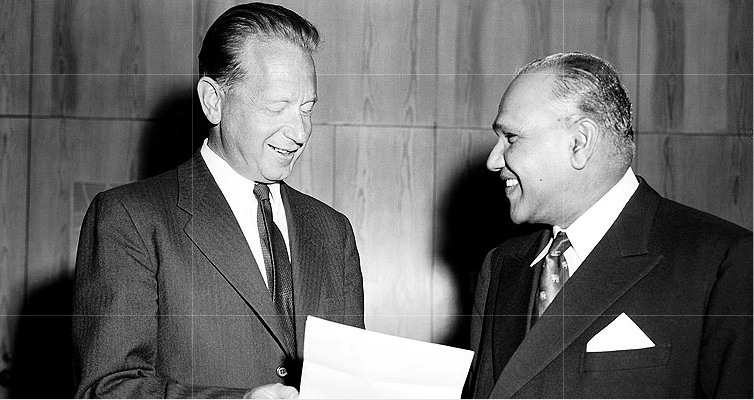
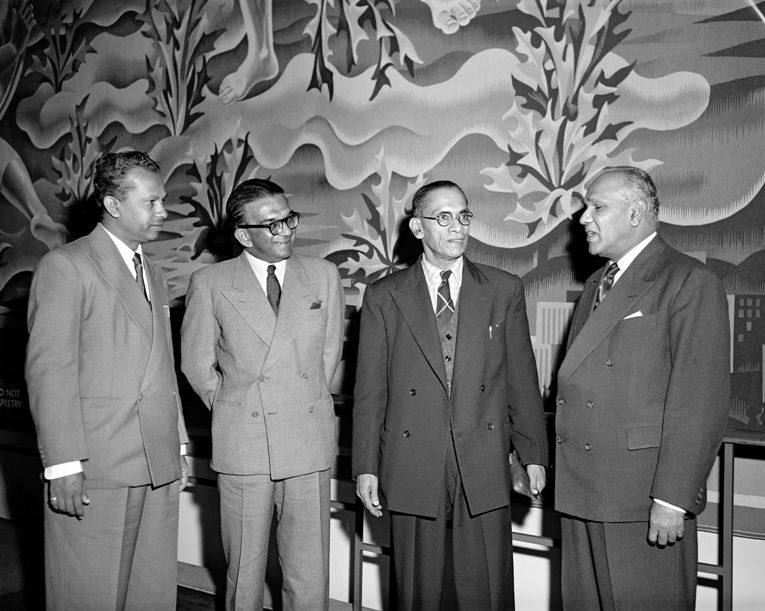
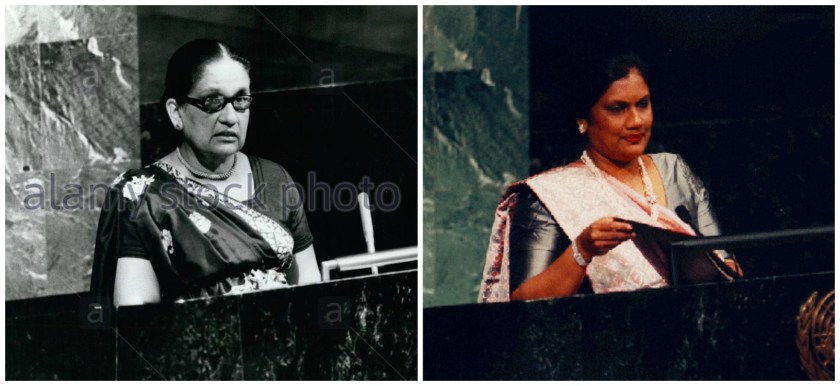
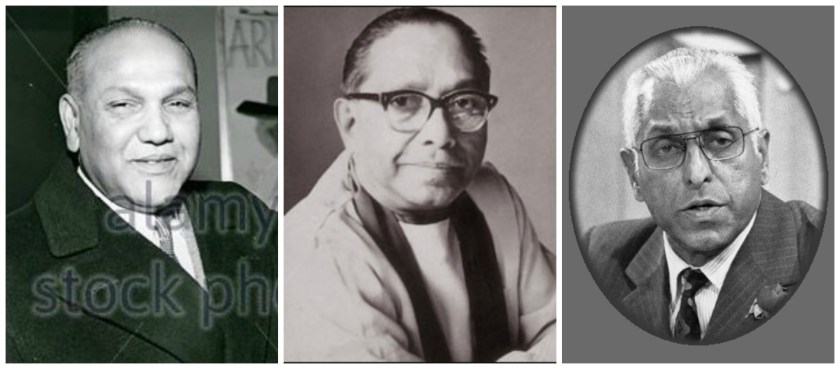
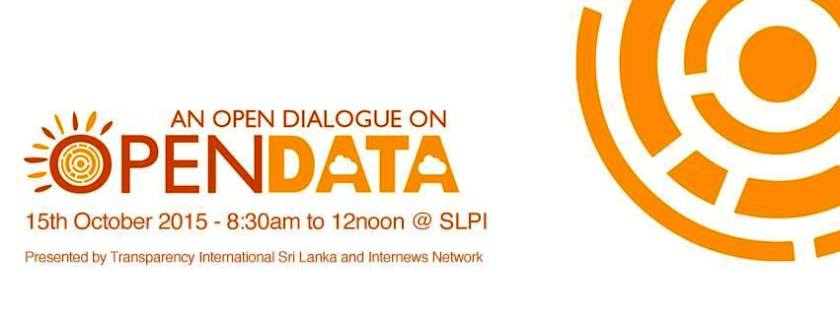
![An Open Dialogue on Open Data - 15 Oct 2015 Coloombo - L to R - Sriganesh Lokanathan, Nalaka Gunawardene, Sanjana Hattotuwa [Photo by Sam de Silva]](https://nalakagunawardene.com/wp-content/uploads/2015/10/an-open-dialogue-on-open-data-15-oct-2015-coloombo-l-to-r-sriganesh-lokanathan-nalaka-gunawardene-sanjana-hattotuwa.jpg?w=840&h=451)
